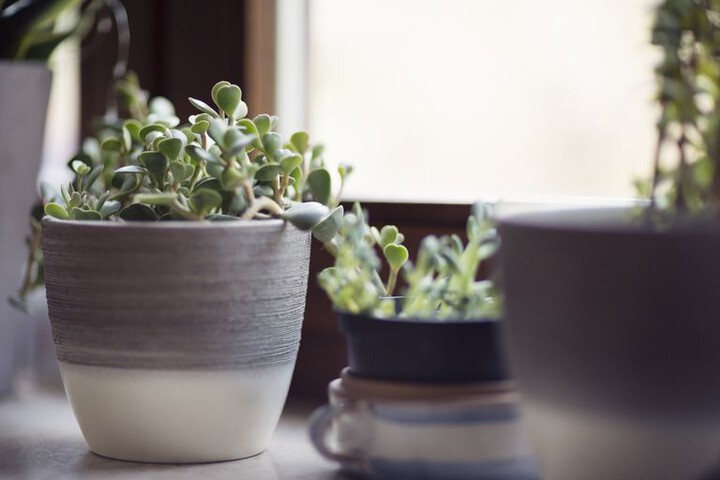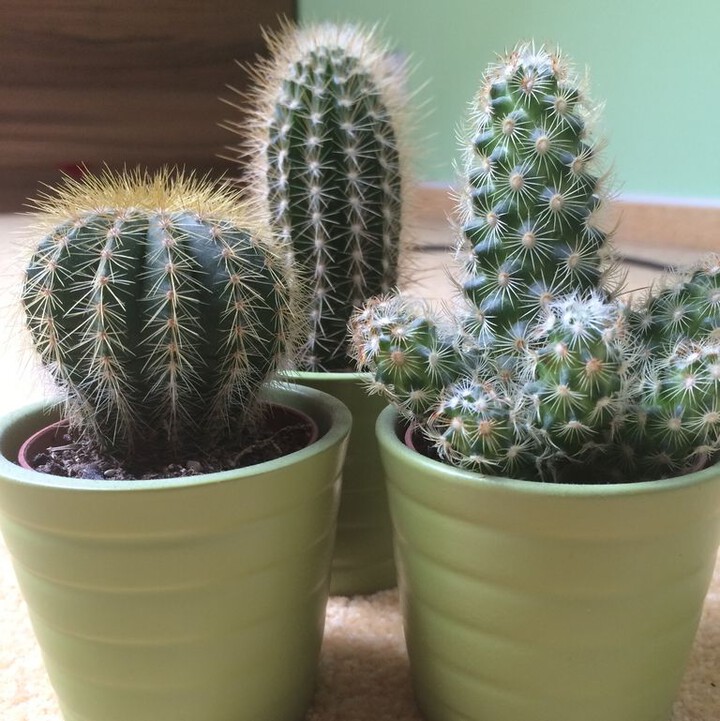You've spotted them in interior design magazines, as part of elaborate wedding centerpieces, and even all over Instagram. Succulents are all the rage right now. The oft-spouted proclamation that succulents are easy to grow is, in fact, far from the truth. Sure, it can be easy, but it requires a bit of a mental adjustment. You need to get into the desert mindset: Imagine unrelenting sun, monsoon-like down pours, and the boomerang temperature changes that characterize the desert’s days — and you might have a little more luck.
If you can't figure out why your jade is dropping leaves or how to stop your sedum from getting more wrinkled by the day, even with regular waterings, there are some practical tips you can follow. Here are five of the most common mistakes succulent newbies are making, and how to get those beauties to thrive.
1. Failing to Give Them Enough Light

The natural light of a plant’s native habitat is perhaps the most difficult environmental variable to emulate indoors. For common houseplants, we have an easier time. Many are native to tropical jungles and accustomed to the shifting periods of shade and sun that happen in your home. After all, that's what naturally happens as the sun moves over a forest canopy.
But if you put a plant that’s used to experiencing a full 12 hours out in the broiling hot sun on an east-facing sill, you’re begging for failure. Your best bet: Choose the sunniest south-facing window available, and if all windows face elsewhere, pick a more forgiving succulent like aloe or throw in the towel and opt for a sturdy pothos.
2. Not Understanding Their Watering Needs

The Chihuahuan Desert gets a little over 9 inches of rain annually — a drop in the bucket compared to what the verdant landscapes most of us call home receive. In the desert, however, when it rains, it pours. To make your own desert-dweller happy, try to emulate the rainfall patterns native to its home habitat. Don’t treat your cacti with a trickle; turn on the taps and let loose a deluge.
All succulents (and all plants for that matter) benefit from a complete soaking, until water comes out of the bottom of the pot. For succulents, wait until the soil is bone dry — and then some — to water again.
3. Settling for a Standard Potting Soil

Most potted plants come in a standard soil mix that works for almost every kind of plant, from ferns to fiddle-leaf figs. The problem: Succulents are designed to withstand one of the most extreme environments on planet earth, so standard potting soil just won’t cut it.
Once you get your succulent baby home, change its soil to a desert-dweller mix, combining half potting soil with something inorganic like perlite. This super well-draining, low-nutrient soil will work for most succulents whether they’re used to thriving in the high and dry Andes or the broiling bottom lands of Death Valley.
4. Overcrowding Them

Succulents tend to come packed into adorable little dishes, all crammed together cheek by jowl. There aren’t many plants that like this arrangement, including succulents. Overcrowding is one of the best ways to encourage mold and insect infestations.
The second issue is that, although succulents do very well getting by on slim pickings, they still need food and water. Too much competition means they’ll probably miss out. If your succulents arrive in a crowded arrangement, pluck them out carefully and give them each their own spacious mini desert dune.
5. Growing Impractical Types

I know it’s really hard to resist growing saguaros indoors, but please DON’T. Some wild things just aren’t meant to be tamed, no matter how pretty their flowers or beguiling their form. Stick instead to the tough little cookies that will happily accept the windowsill as their home sweet home.
Crassula is a good genus to explore if you’re working with indoor conditions, as is Sansevieria (a.k.a. snake plant). The Mammillaria cacti (so called for their woolly hair, see above) is another good pick if you’re looking for a prickly plant companion.